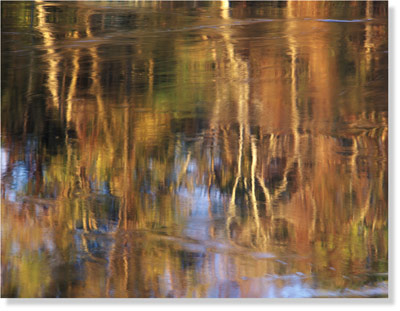|
|||||||
|---|---|---|---|---|---|---|---|
| View Gallery | |||||||
Vision Quest Modern man's search for happiness is a constant struggle. We spend our lives accumulating wealth and property. We build great cities and take pride in our technical achievements, yet many feel there is something missing in their lives. Some ancient cultures believed that there is a powerful force that accumulates in solitude, and that living in crowded cities dissipates spiritual power. Vision Quest began as a book project to photograph the Roanoke River Basin, and quickly became a personal journey of self-discovery… a journey where I learned to enjoy the simple beauty of a very complex natural world, finding splendor in the most humble of places. Designated one of the "Last Great Places" by The Nature Conservancy, the Roanoke River Basin contains the largest intact and least disturbed bottomland hardwood and cypress-tupelo ecosystem remaining on the Atlantic coast of North America. This ecosystem is currently considered one of the greatest land protection stories in U.S. conservation history. The lower Roanoke River has become widely recognized as a model for how communities, corporations, government agencies, and conservation organizations can join forces to preserve the world's natural resources profitably and productively. Over the last ten years a new awareness of the river has taken place through the hard work of organizations like The Nature Conservancy, Roanoke River Basin Association, and Roanoke River Partners who work to preserve and protect the River Over the years my landscape photography has been greatly influenced by the Hudson River School of artists and the writers of that period who believed that an individual’s knowledge could go beyond self and the visible world to gain a closer understanding about God. The literature and landscape painting of the mid 1800‘s focused on the divinity in nature, encouraging Americans to experience the moral benefit of contemplating their unspoiled surroundings as a visible manifestation of the invisible divinity. Thomas Cole believed that “progress must be tempered by careful and gradual development of a nation’s resources; subduing the wilderness must not mean rampant destruction”. The plundering of natural resources in the name of progress will ultimately create a progressive decline in the quality of life for future generations once these resources are depleted. Modern society will find no solution to the ecological problem unless it takes a serious look at its lifestyle. Today's society is given to instant gratification and consumerism while remaining indifferent to the damage that these cause. Simplicity, moderation, and discipline, as well as a spirit of sacrifice, must become a part of everyday life, if we want our children to experience the same quality of life we now enjoy. This project was not meant to be another book of "pretty pictures" about nature, but images meant to challenge us to begin viewing the natural world differently. While most of these photographs were made deep in the backswamps of the river basin, some were made along busy highways; still the illusion of wilderness is present in them all. The beauty that I discovered along the banks of the Roanoke could be found as close as our own back yards if we chose to open our eyes. While this philosophy may be easy to profess, putting words into action is much harder. It has been ten years since I first explored the Roanoke River Basin. During the early stages of the Roanoke project it was easy to understand the words of Cole and Thoreau because I was working in one of the last great wildernesses left in North Carolina. The many creeks and backswamps became my muse, my inspiration. I have never felt closer to the divine than I did during that period of my life, but as the project came to an end and the first exhibit was donated to The Nature Conservancy I quickly regressed, forgetting the lessons learned on the river. The struggles and responsibilities of everyday life have a way of taking over. It wasn’t until I was asked to put together a new exhibit of the river that I began to remember those lessons and reacquaint myself with the beliefs of the writers and painters of the Hudson River period who urged their audience to “nurture the oasis in us as a retreat from the world of practical economy, progress, and fashion.” Much has changed since that first exhibit and book but my love affair with the River continues, and even though the project has long been over I continue to visit and photograph along the river basin. I have included on the site some of those new images and also some outtakes from the first book project that never made it into print Photography has gone through many changes in the last ten years especially since entering the digital age. I have also chosen to include some recent images taken with digital cameras. My journey down the Roanoke was a trip back in time, to a primordial forest where I could lose myself in the backswamps and free my mind of all worries. It became my Walden, a place where watches and appointment books were not necessary for survival, where I could be nurtured by the healing effects of my natural surroundings, and enjoy the many wonders of the river basin that I was able to see through newly opened eyes. It was a journey to a place that has remained relatively unchanged, and should remain that way so all can enjoy its healing powers. While this journey has ended, the love affair goes on and a new project has begun. The story of the Roanoke to be continued in 175 Paces.
|
|||||||

